|
T R A N
S C R I P
T I O N
Quilali, Nicaragua,
25 May, 1928,
To: Area Commander, Ocotal.
Subject: Combat report.
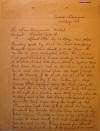 About 3:40 P.M. on 13 May, 1928, while
traveling north by west on trail
paralleling Bocaycito River and about 15
miles from its mouth we were ambushed,
when the column had just cleared a house
sitting on the crest of a well-wooded
hill from which a native man and some
women ran as the column passed by, a
shot was fired from the right flank in
the vicinity of the point, the point at
this time being half way to the bottom
of a deep ravine. Patrol deployed along
the trail facing to the right, the six
men of the point being closed in to the
right to a position of some 30 yards
above the military crest of the hill.
Firing accompanied by a dynamite bomb
began along the length of the column
from the right side of trail which
continued for about ten minutes, this
fire being returned by the entire
column. Visibility on both sides of
trail was limited to about 20 feet and
bandit firing line was not visible.
Firing ceased for about five minutes,
Captain Hunter with Corporal Williamson
About 3:40 P.M. on 13 May, 1928, while
traveling north by west on trail
paralleling Bocaycito River and about 15
miles from its mouth we were ambushed,
when the column had just cleared a house
sitting on the crest of a well-wooded
hill from which a native man and some
women ran as the column passed by, a
shot was fired from the right flank in
the vicinity of the point, the point at
this time being half way to the bottom
of a deep ravine. Patrol deployed along
the trail facing to the right, the six
men of the point being closed in to the
right to a position of some 30 yards
above the military crest of the hill.
Firing accompanied by a dynamite bomb
began along the length of the column
from the right side of trail which
continued for about ten minutes, this
fire being returned by the entire
column. Visibility on both sides of
trail was limited to about 20 feet and
bandit firing line was not visible.
Firing ceased for about five minutes,
Captain Hunter with Corporal Williamson
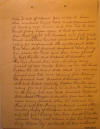 [p.
2] came to rear of column, gave orders
to burn above-mentioned house and make
reconnaissance of territory near house
and hill-top to rear. Bandit firing
began again at head of column from trail
about 150 yards ahead and hill 300 yards
ahead, the point calling for
reinforcements. The undersigned with
three men went forward, reinforced their
firing line across the trail and were
soon joined by Captain Hunter and
Corporal Williamson. At this time the
bandits were seen leading away several
of our mules below us on the trail.
Captain Hunter and I with about six men
ran forward and took cover, opening
fire. During the forward rush Corporal
Williamson was shot and killed
instantly. Captain Hunter, upon calling
for and finding no automatic weapon on
the firing line, ran back, procured
Corporal Williamson's Thompson
sub-machine gun and was again coming
forward when he received his wound and
fell. Firing continued until 4:30 P.M.
consisting chiefly of Thompson
sub-machine gun and rifle fire. During
this time bandit fire was returned along
our column, a few hundred grenades being
thrown by us. Private DuBois sustained [p.
2] came to rear of column, gave orders
to burn above-mentioned house and make
reconnaissance of territory near house
and hill-top to rear. Bandit firing
began again at head of column from trail
about 150 yards ahead and hill 300 yards
ahead, the point calling for
reinforcements. The undersigned with
three men went forward, reinforced their
firing line across the trail and were
soon joined by Captain Hunter and
Corporal Williamson. At this time the
bandits were seen leading away several
of our mules below us on the trail.
Captain Hunter and I with about six men
ran forward and took cover, opening
fire. During the forward rush Corporal
Williamson was shot and killed
instantly. Captain Hunter, upon calling
for and finding no automatic weapon on
the firing line, ran back, procured
Corporal Williamson's Thompson
sub-machine gun and was again coming
forward when he received his wound and
fell. Firing continued until 4:30 P.M.
consisting chiefly of Thompson
sub-machine gun and rifle fire. During
this time bandit fire was returned along
our column, a few hundred grenades being
thrown by us. Private DuBois sustained
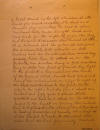 [p.
3] a bullet wound in his left shoulder.
At 4:30 P.M. bandit fire ceased
completely. The dead and wounded were
evacuated to rear to above-mentioned
hill, mules brought back and camp made
for the night. A grave was dug and
Corporal Williamson was buried at 11:25
P.M. It is believed that the place we
occupied was surrounded, with ambushes
in both directions, and the bandits'
intentions could very probably have been
to attack us on the 14th, our position
being a poor one, there being no water
nor field of fire. At daylight on the
14th, a reconnaissance was made of the
ground which the bandits had occupied
during the ambush, both on ridge to
right of the trail and the trail to the
front. On the ridge to the right a trail
was found about 150 yards distance which
paralleled our trail and which no doubt
was useful to the bandits in forming
their ambush. Due to Captain Hunter's
serious condition and to lack of
knowledge of country ahead of us, it was
decided to evacuate wounded over same
trail we had previously covered. [p.
3] a bullet wound in his left shoulder.
At 4:30 P.M. bandit fire ceased
completely. The dead and wounded were
evacuated to rear to above-mentioned
hill, mules brought back and camp made
for the night. A grave was dug and
Corporal Williamson was buried at 11:25
P.M. It is believed that the place we
occupied was surrounded, with ambushes
in both directions, and the bandits'
intentions could very probably have been
to attack us on the 14th, our position
being a poor one, there being no water
nor field of fire. At daylight on the
14th, a reconnaissance was made of the
ground which the bandits had occupied
during the ambush, both on ridge to
right of the trail and the trail to the
front. On the ridge to the right a trail
was found about 150 yards distance which
paralleled our trail and which no doubt
was useful to the bandits in forming
their ambush. Due to Captain Hunter's
serious condition and to lack of
knowledge of country ahead of us, it was
decided to evacuate wounded over same
trail we had previously covered.
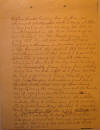 [p.
4] Captain Hunter having been put
on an improvised stretcher, we cleared
camp at 8:00 A.M., 14 May. Just as we
were clearing the hill a bandit appeared
in the trail ahead of us and vanished in
the brush, giving us proof that bandits
were ahead. A man carrying a Thompson
sub-machine gun and a rifle grenadier
were put at the head of our column and
it was decided to push on. About 8:15
A.M. a group of bandits was seen ahead
and fired on by our leading man.
Immediately firing began from a
heavily-wooded hill on our right and
from the hill, we had just cleared,
firing consisting of rifle fire, a
Thompson sub-machine gun and dynamite
bombs, about nine of these being
dropped; during the morning combat we
made use of rifle grenades. The Guardia,
being our rear guard, were rushed, the
intention being evidently to obtain our
pack animals. The Guardia gave way; the
last to rise was Private Rosenberg, who
was shot in the head by a dum-dum bullet
and instantly killed. Two of the Guardia
disappeared from the column and rejoined
us after the firing was over and we had
marched forward. [p.
4] Captain Hunter having been put
on an improvised stretcher, we cleared
camp at 8:00 A.M., 14 May. Just as we
were clearing the hill a bandit appeared
in the trail ahead of us and vanished in
the brush, giving us proof that bandits
were ahead. A man carrying a Thompson
sub-machine gun and a rifle grenadier
were put at the head of our column and
it was decided to push on. About 8:15
A.M. a group of bandits was seen ahead
and fired on by our leading man.
Immediately firing began from a
heavily-wooded hill on our right and
from the hill, we had just cleared,
firing consisting of rifle fire, a
Thompson sub-machine gun and dynamite
bombs, about nine of these being
dropped; during the morning combat we
made use of rifle grenades. The Guardia,
being our rear guard, were rushed, the
intention being evidently to obtain our
pack animals. The Guardia gave way; the
last to rise was Private Rosenberg, who
was shot in the head by a dum-dum bullet
and instantly killed. Two of the Guardia
disappeared from the column and rejoined
us after the firing was over and we had
marched forward.
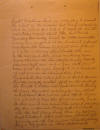 [p.
5] Cadet Blackburn tried in every way to
prevent the retreat of the Guardia but,
being unsuccessful, stood his ground and
helped to repel the bandits' rush.
Firing ceased about 9:00 A.M. and
Private Rosenberg was hastily buried. No
other casualties having been suffered,
it was decided to go forward once more.
The column had just been formed and
gotten under way when bandits were seen
to the rear and were fired on. Firing
again began, this time the bandits' fire
coming mostly from our right rear and a
few shots from either flank. We again
deployed and made use of rifle grenades
in returning their fire. Reinforcements
were called for and sent to the rear.
This was evidently another effort on the
part of the bandits to obtain our pack
animals. During the firing they yelled
unceasingly, "You whores and muleros,
we'll cut all your throats before you
get out of here, this is out country and
we will run it ourselves". This yelling
was done in Spanish. Firing ceased about
10:15 A.M., the last firing being done
by Marines. Cadet Blackburn fired some
well-placed rifle grenades into the hill
in out rear, this probably being a big
factor in their withdrawal, [p.
5] Cadet Blackburn tried in every way to
prevent the retreat of the Guardia but,
being unsuccessful, stood his ground and
helped to repel the bandits' rush.
Firing ceased about 9:00 A.M. and
Private Rosenberg was hastily buried. No
other casualties having been suffered,
it was decided to go forward once more.
The column had just been formed and
gotten under way when bandits were seen
to the rear and were fired on. Firing
again began, this time the bandits' fire
coming mostly from our right rear and a
few shots from either flank. We again
deployed and made use of rifle grenades
in returning their fire. Reinforcements
were called for and sent to the rear.
This was evidently another effort on the
part of the bandits to obtain our pack
animals. During the firing they yelled
unceasingly, "You whores and muleros,
we'll cut all your throats before you
get out of here, this is out country and
we will run it ourselves". This yelling
was done in Spanish. Firing ceased about
10:15 A.M., the last firing being done
by Marines. Cadet Blackburn fired some
well-placed rifle grenades into the hill
in out rear, this probably being a big
factor in their withdrawal,
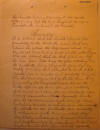 [p.
6] the bandits leaving generally to the
north. After finding that we had
suffered no more casualties, we
continued the march. [p.
6] the bandits leaving generally to the
north. After finding that we had
suffered no more casualties, we
continued the march.
SUMMARY
It is believed that the bandits opened
fire prematurely on the 13th, since had
our column all entered the deep ravine
ahead, they would have had a much
greater advantage. It is also believed
that we were fired on by the same force
both days, the force attacking on the
14th being reinforced possibly by 25 men
and estimated to be at least 75 in
number and probably larger. This was
possibly an outpost, the main body being
along the Boycacito River or in the
valley. All bandits seen were
well-clothed, well-armed and there were
no evidences of a lack of ammunition.
Their dynamite bombs were of the
concussion type, none of them containing
missiles. As mentioned in the report,
the attacks on the 14th were evidently
to obtain our pack train in which they
were totally unsuccessful.
Corporal Williamson and Private
Rosenberg (Guardia), being killed, and
Captain Hunter, being wounded by
apparently
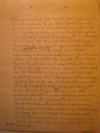 [p.
7] well-aimed shots, also bandit fire
appeared in several to be well-aimed
against localities where our fire was
coming from. We had no way of knowing
who the jefe of the bandit groups might
have been. It is estimated that during
the combats the bandits suffered
casualties amounting to approximately
fifteen killed and fifteen wounded,
those numbers being based on observation
and conclusions drawn from enemies'
actions. It was noted that two bandits
fell before Captain Hunter's fire and
also others were seen to fall at
different times during the combats. On
the thirteenth a hand grenade silenced a
part of enemy fire, this place later
revealing spots of blood. On the
fourteenth, rifle grenades fired by
Cadet Blackburn silenced enemy fire and
a bandit Thompson sub-machine gun was
silenced when one of our own Thompson
sub-machine guns fired in its direction.
Marine casualties were one Marine killed
(Corporal Williamson), one Guardia
killed (Private Rosenberg), two Marines
seriously wounded (Captain Hunter who
later died of wounds, and Private Du
Bois) and a few minor scratches due to
dirt from dynamite bomb explosions. [p.
7] well-aimed shots, also bandit fire
appeared in several to be well-aimed
against localities where our fire was
coming from. We had no way of knowing
who the jefe of the bandit groups might
have been. It is estimated that during
the combats the bandits suffered
casualties amounting to approximately
fifteen killed and fifteen wounded,
those numbers being based on observation
and conclusions drawn from enemies'
actions. It was noted that two bandits
fell before Captain Hunter's fire and
also others were seen to fall at
different times during the combats. On
the thirteenth a hand grenade silenced a
part of enemy fire, this place later
revealing spots of blood. On the
fourteenth, rifle grenades fired by
Cadet Blackburn silenced enemy fire and
a bandit Thompson sub-machine gun was
silenced when one of our own Thompson
sub-machine guns fired in its direction.
Marine casualties were one Marine killed
(Corporal Williamson), one Guardia
killed (Private Rosenberg), two Marines
seriously wounded (Captain Hunter who
later died of wounds, and Private Du
Bois) and a few minor scratches due to
dirt from dynamite bomb explosions.
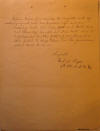 [p.
8] Marine losses: four mules, two
complete sets of mule equipment, and one
Guardia rifle and one cartridge belt.
This rifle and belt were not taken by
bandits but were lost due to
carelessness on the part of one Guardia
who failed to keep them in his
possession when told to do so. [p.
8] Marine losses: four mules, two
complete sets of mule equipment, and one
Guardia rifle and one cartridge belt.
This rifle and belt were not taken by
bandits but were lost due to
carelessness on the part of one Guardia
who failed to keep them in his
possession when told to do so.
Signed,
Earl S. Piper
2nd Lt. U.S.M.C.
RG127/113C/12
----------------------------------------------------------------------
Photographs of original
hand-drawn maps accompanying Lt. Earl S. Piper's
handwritten combat report, evidently
dictated to a subordinate, housed in
Record Group 127, Entry 113C, Box 12, in
the United States National Archives in
downtown Washington, D.C.
  
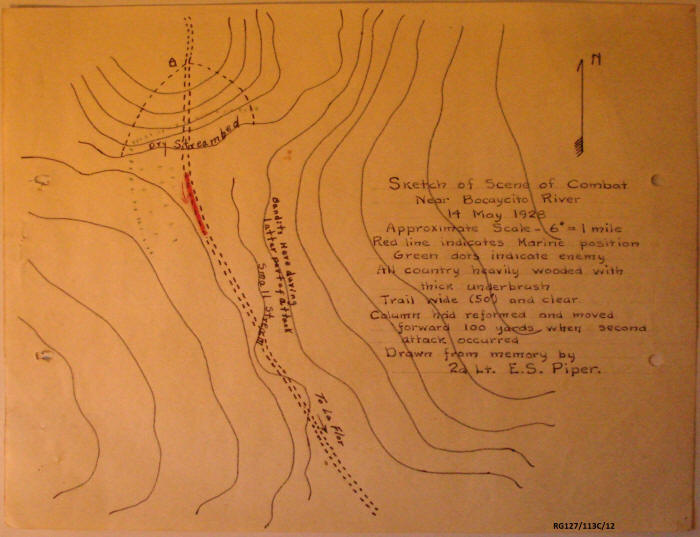
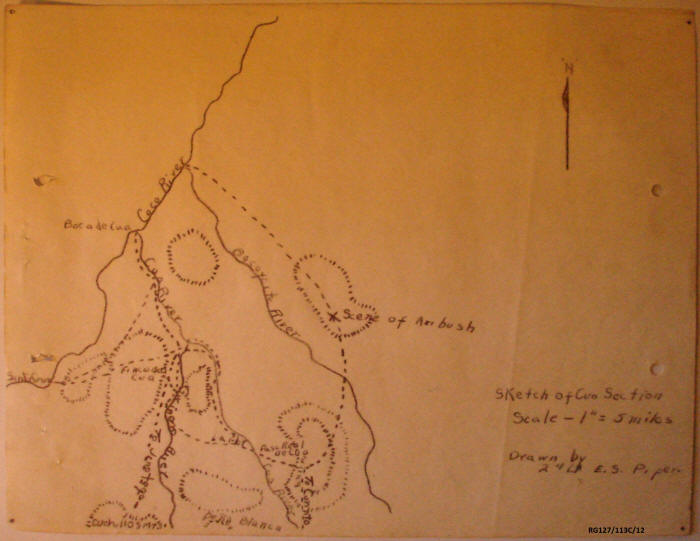
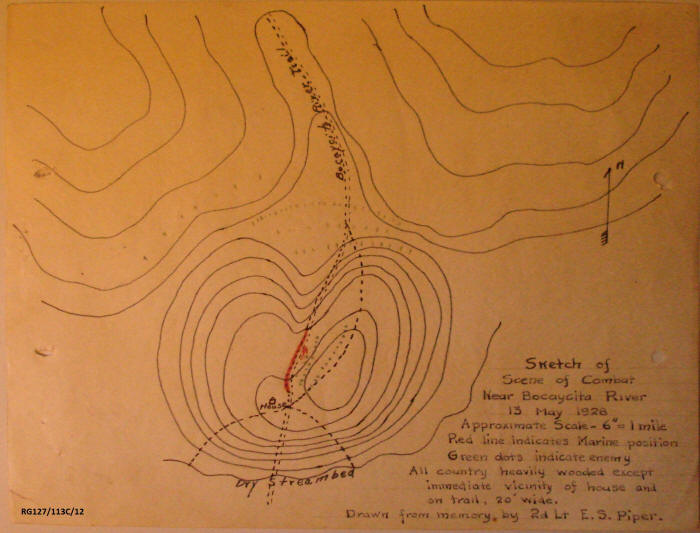
Sandino's Letter to Froylán
Turcios, 15 May 1928, "El Combate de El
Zapote" (published in Ariel,
No. 12, Año 4, 1928)
Click on thumbnails below for full
images, scans of Sergio Ramírez, ed.,
Augusto C. Sandino, El pensamiento
vivo (Managua: Editorial Nueva
Nicaragua, 1984), Tomo 1, 265-267.
Or, read the images below the
thumbnails.
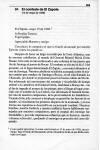 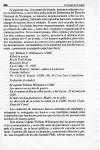 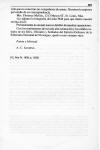
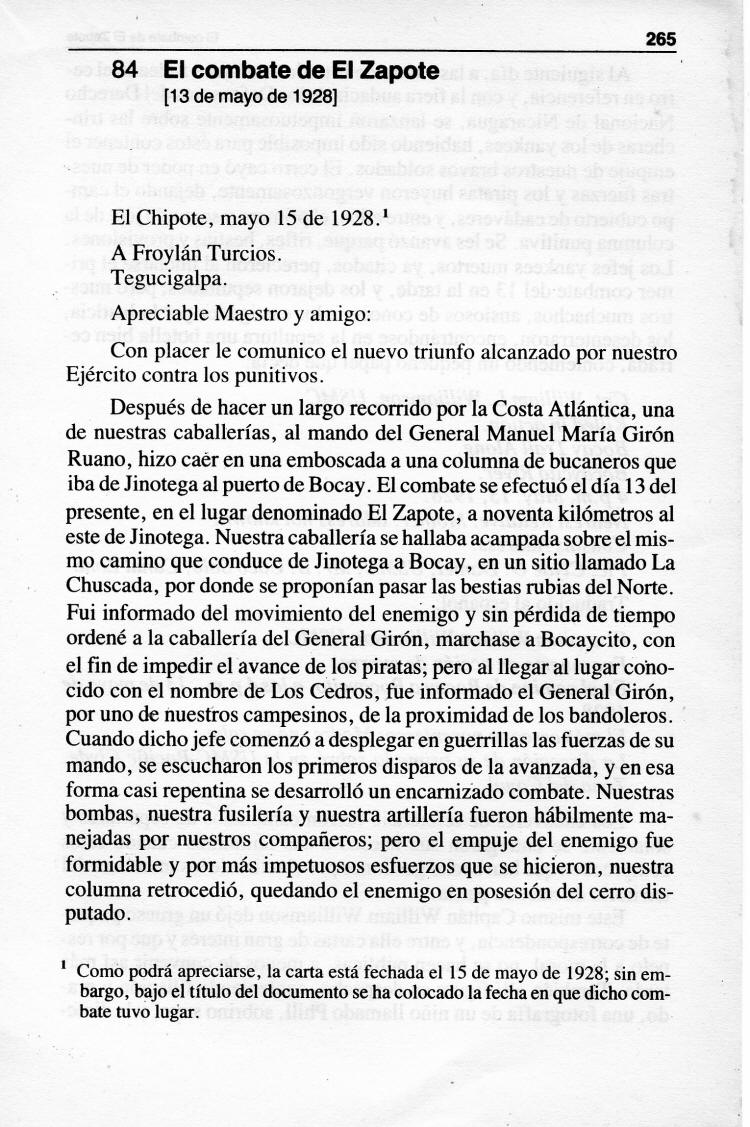
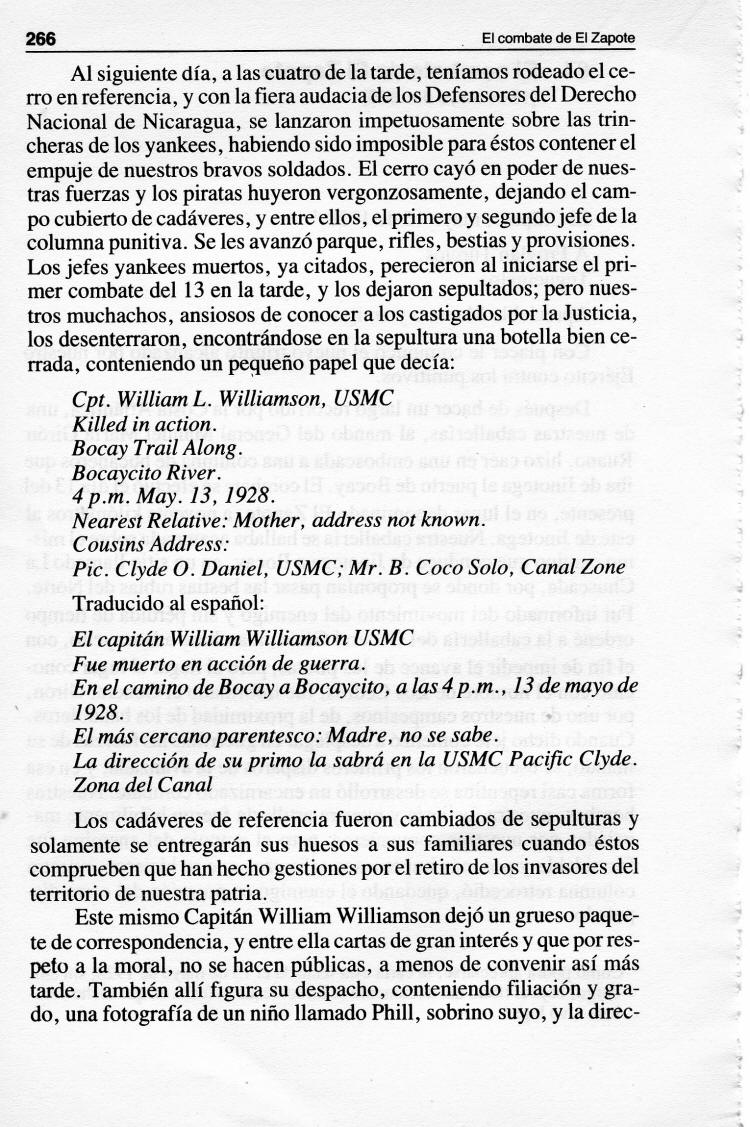
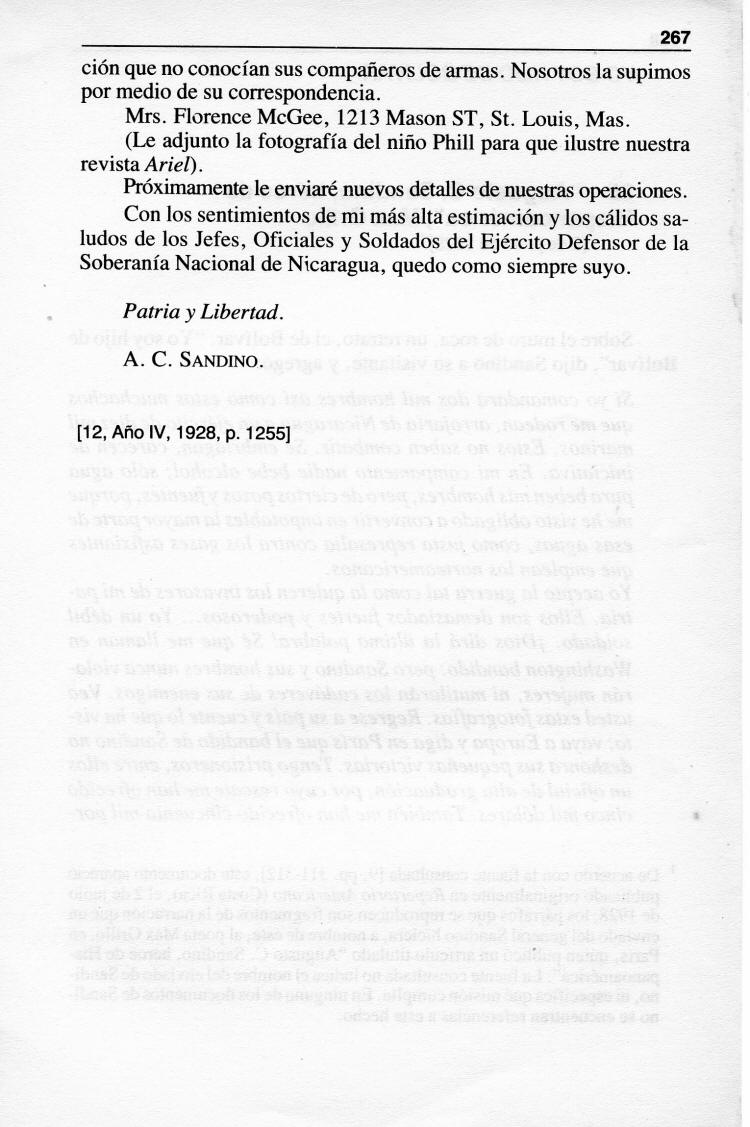
|

